The village of Fara in Sabina overlooks beautiful green valleys that stretch as far as the eye can see. Its territory is rich in beech and oak forests, hills, olive groves and pretty hamlets scattered all over the countryside.
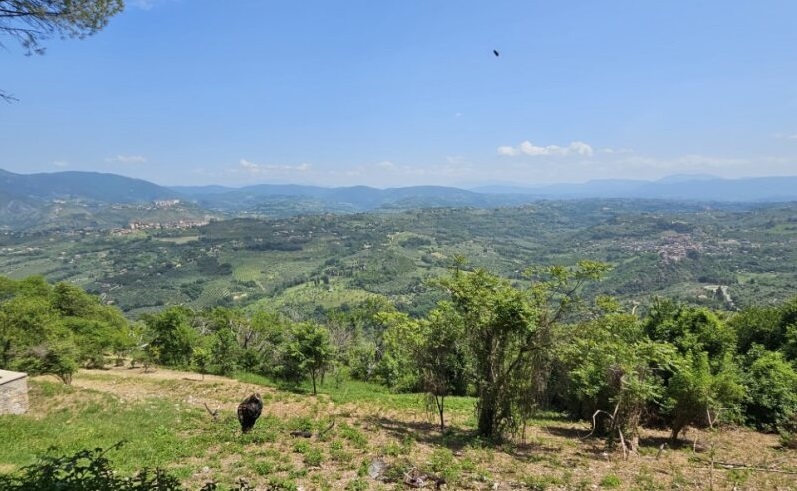
The characteristic landscape of Sabina
This territory is an authentic paradise for enthusiasts of slow tourism and visitors in search of a unique experience through history, nature, art and food-and-wine tradition.
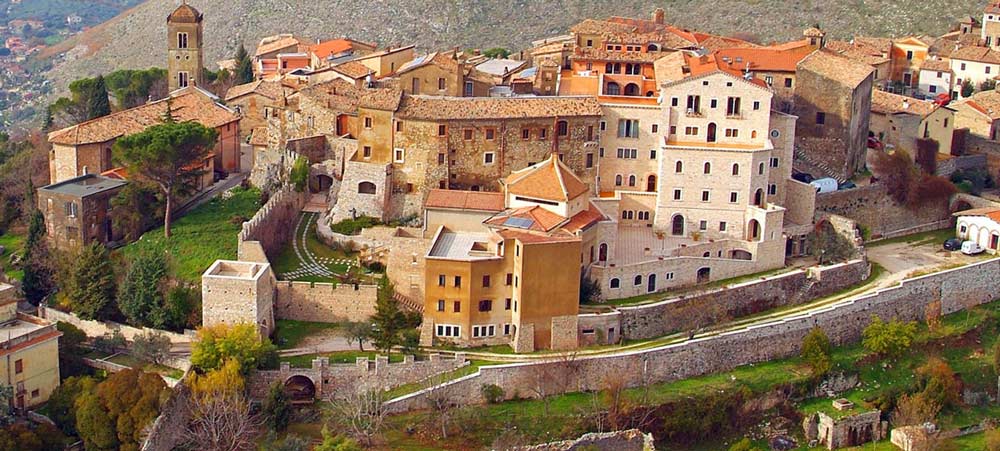
The medieval village of Fara in Sabina
Fara in Sabina lies in the heart of a very fertile area, where the Sabines settled from the tenth to the nineth century BC. Detailed traces of this ancient civilisation can be admired in the Civic Archaeological Museum of Fara in Sabina, MUSAF.
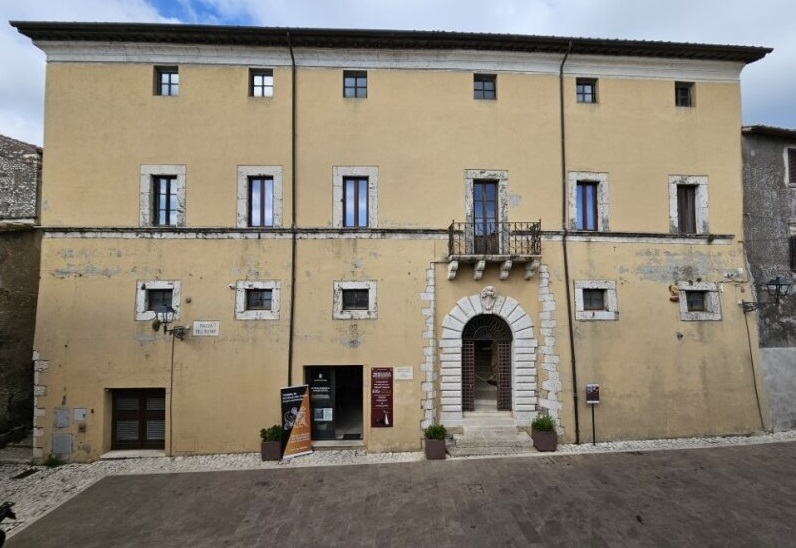
Palazzo Brancaleoni, hosting the Civic Archaeological Museum of Fara in Sabina
The Museum is housed in the sixteenth-century Palazzo Brancaleoni, in Piazza del Duomo. It displays ancient testimonies of inestimable value from the excavations in the ancient city of Cures, near the Tiber River, and from the Necropolis of Eretum, not far from the current Montelibretti.
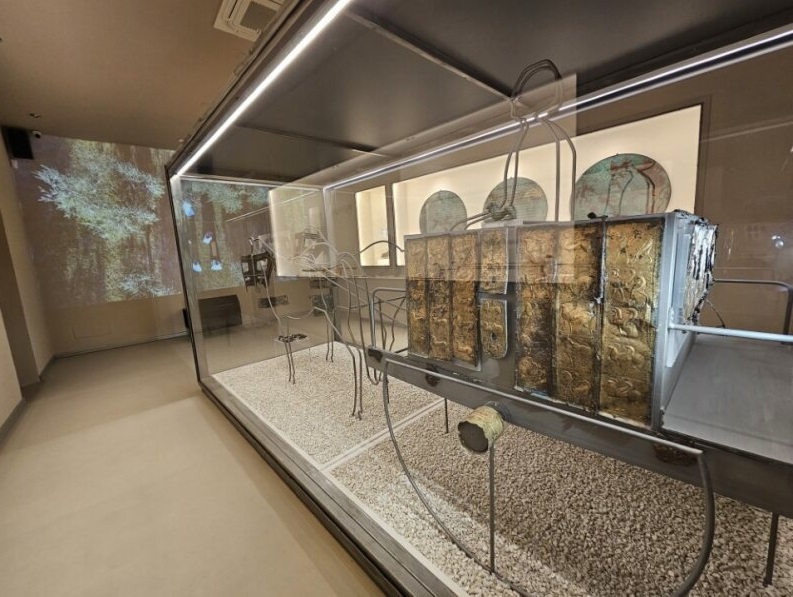
The Chariot of the Prince of Eretum
Among the findings displayed, do not miss the magnificent terracotta throne and the Chariot of the Prince of Eretum, stolen from Tomb XI, together with the grave goods, during the construction of a new building. Many years later it was found in the NY Carlsberg Glyptotek in Copenhagen and returned to the community of Fara in Sabina. Since 2024 the Prince’s Chariot has been exhibited in a large room inside Palazzo Brancaleoni.
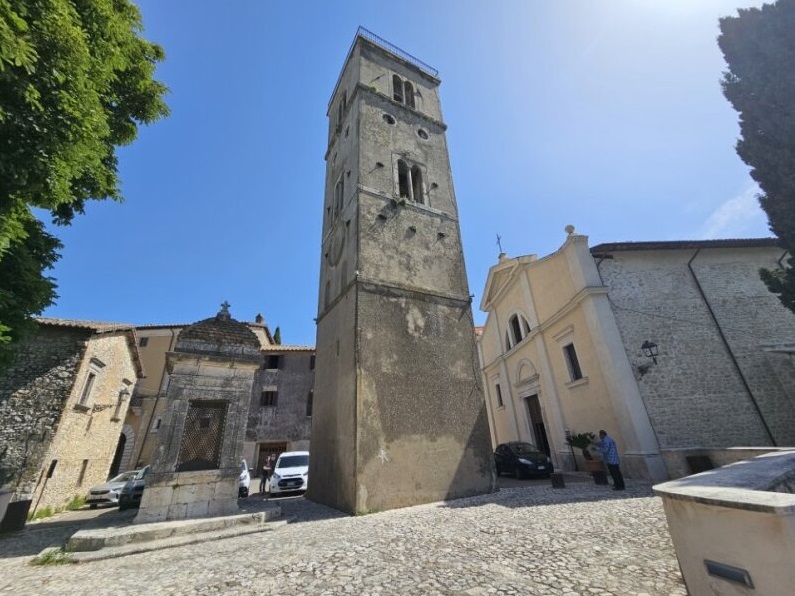
The piazza del Duomo with the Cisterna, the bell tower, and the Church of Sant’Antonino Martire
In piazza del Duomo, the charming medieval square, we also find the Cisterna, built by the Farnese family in 1588, the peculiar bell tower separated from the Church, and the sixteenth century Collegiate Church of Sant’Antonino Martire, the patron saint of Fara in Sabina and the surrounding hamlets. The Church, built on a pre-existing underground temple, preserves important treasures, such as the Volterra alabaster tabernacle by Vignola, dating back to the mid-16th century, and a lifelike crucifix.
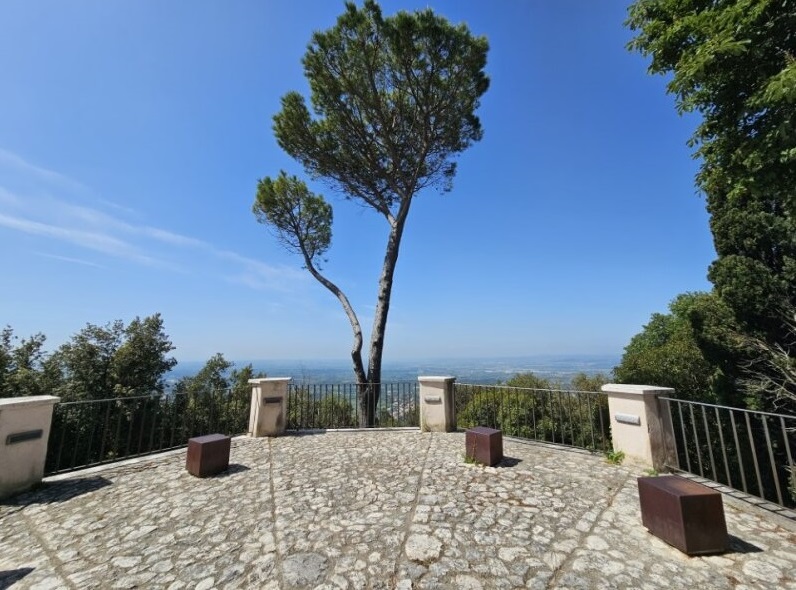
The terrace overlooking the valley in Fara in Sabina
We can enjoy a spectacular view of the valley from the terrace in Piazza del Duomo, or venture through the winding, narrow streets which lead into small, well-preserved courtyards.
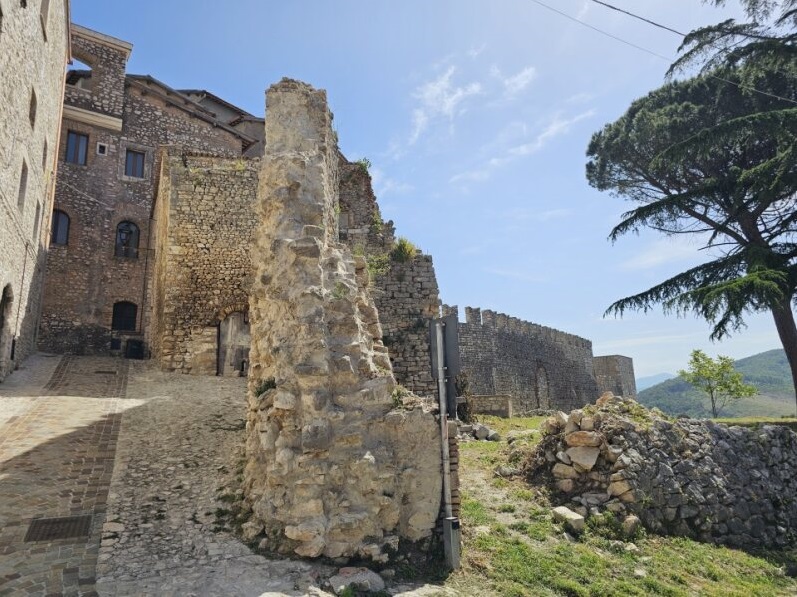
The entrance to the Monastero delle Monache Clarisse Eremite in Fara in Sabina
Also worth visiting is the Monastero delle Monache Clarisse Eremite, and the Museo del Silenzio, a dark room displaying daily life objects which once belonged to the nuns, a powerful experience of lights and sounds of a monastic life spent in perpetual contemplation of the divine.
Through narrow lanes, we arrive in Piazza Garibaldi, known as Piazza Forcina, the birthplace of the Greek scholar Lorenzo Rocci, father of the Italian-Greek dictionary, among the most famous in Europe and used by several generations of students.
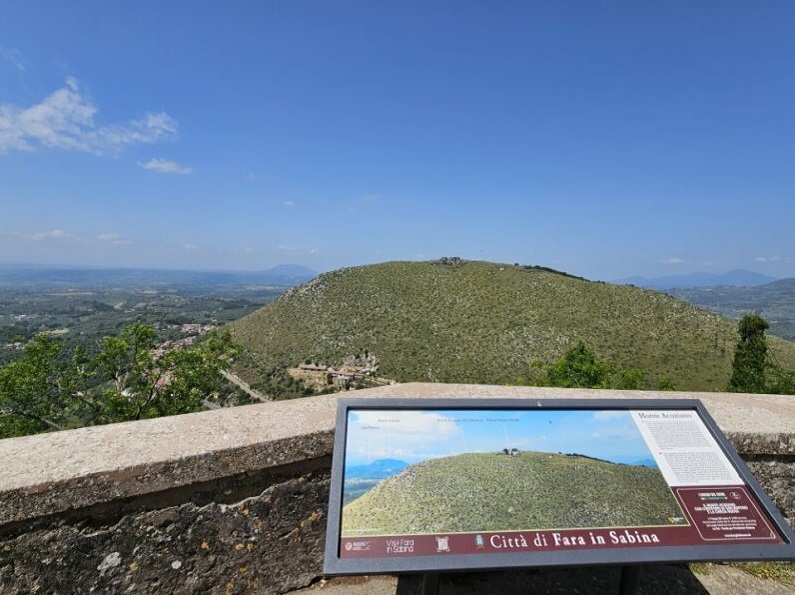
Monte Acuziano from Fara in Sabina
After the scholar’s house we reach the terrace dominating Monte Acuziano. On the top, we can clearly see the ruins of the unfinished Abbey of San Martino, reachable through a path from the district Quattro Venti.
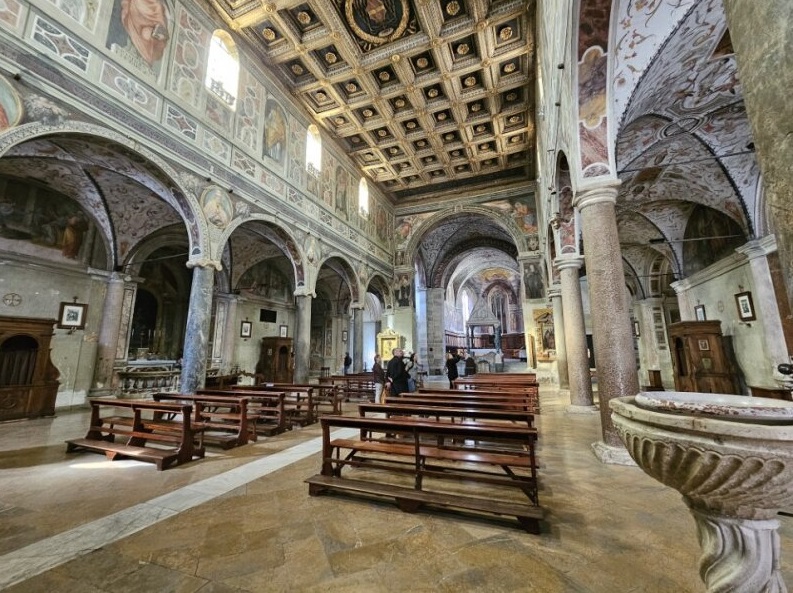
The interior of the Farfa Abbey
Not to be missed in Sabina is a visit to the fourteenth century Abbey of Farfa, one of the Benedictine Monasteries nominated as UNESCO World Heritage Sites.
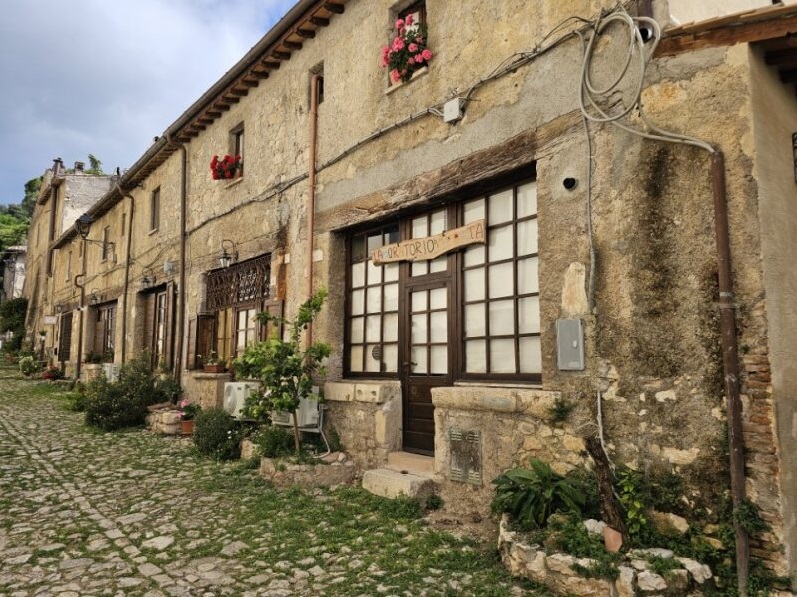
The characteristic village of Farfa
In Farfa, do not forget to visit the stone houses and cute local craft shops, from where you can bring home a special souvenir of this magical place. As early as the 1400s, during the spring and autumn fairs, these shops used to sell ceramics, pottery, fabrics, and bakery products. In one of these shops, you can admire a perfectly functioning ancient loom.
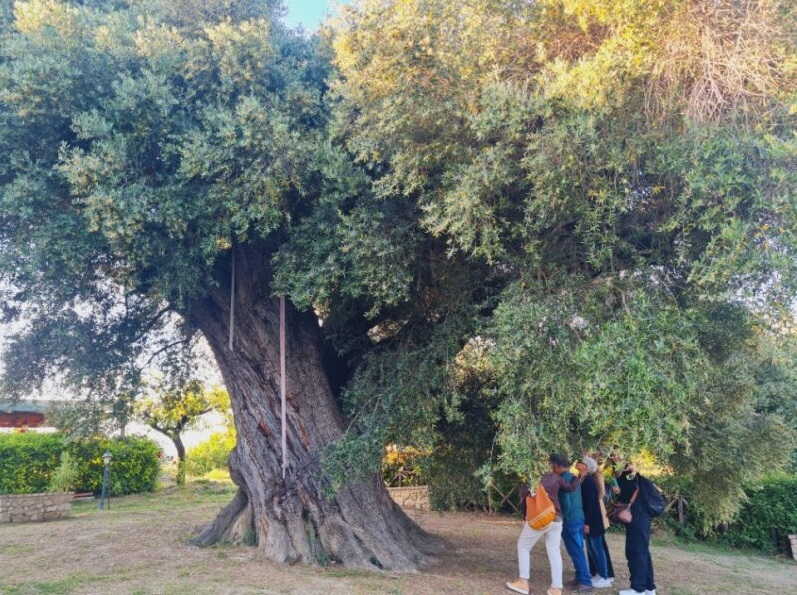
The big olive tree in Canneto
Before leaving the enchanting Sabina, let us visit the small hamlet of Canneto. Here we find the extraordinary “Ulivone”, a thousand-year-old olive tree (the oldest one in Europe and among the biggest ones!), now a symbol of Sabina, with a crown and a trunk of 7.2 metres in diameter and roots that have been sinking into the earth for over 2,000 years. This miracle of nature, reachable through the indications on the spot, can be freely appreciated by kind permission of the landowner.
Before leaving, let us taste typical local products, such as the Pasta alla Sabinese, a simple dish but rich in flavour, or a warm Bruschetta, a slice of roasted bread, seasoned with the delicious DOP Sabina oil.
